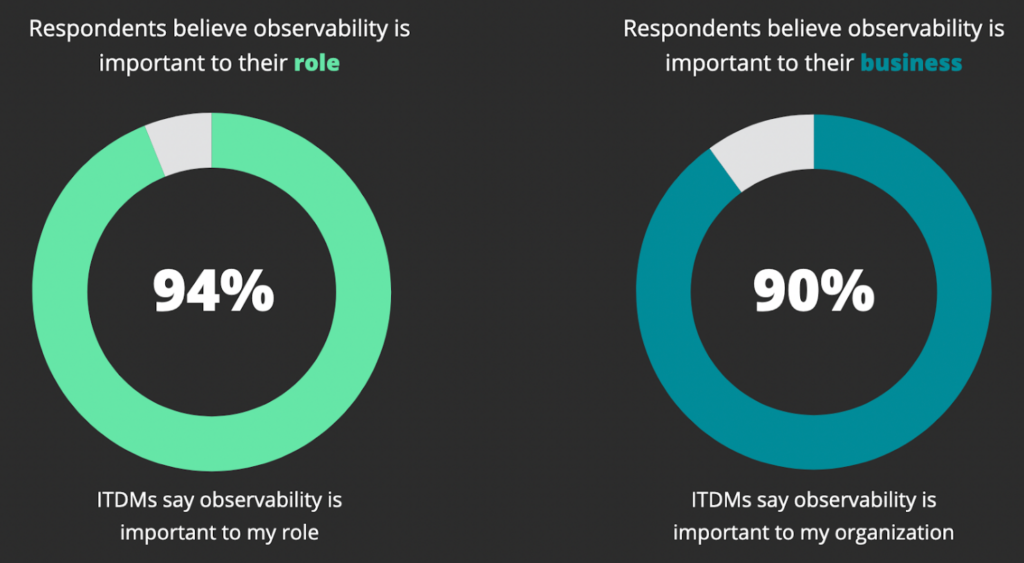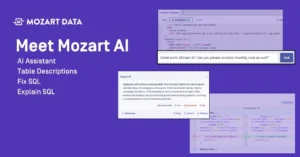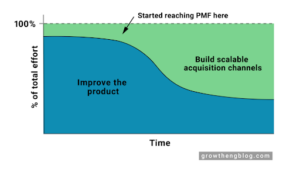Business leaders generally recognize the importance of data and its impact on the effectiveness and efficiency of their operations. However, the existence of information silos, coupled with the increasingly complex service stack businesses use, have made it difficult to achieve a truly holistic view of business data. This means that executives are usually aware of business data only in a specific context, and without a complete understanding of how that data affects the rest of the business. For business leaders who want a nuanced understanding of the ins and outs of their operation, data observability is crucial. Businesses worldwide are starting to realize this.

What Is Data Observability?
While most business leaders have some visibility over their data, true data observability eludes them. This could be due to the lack of understanding of what data observability is and why it’s important. As a result, they suffer from issues related to data reliability, data quality, and inefficiencies in their data pipeline performance.
Data observability refers to an organization’s ability to view its entire data pipeline, evaluate performance, optimize data processes, and monitor data health. Data observability is particularly important for businesses that operate in fast-paced environments that evolve rapidly. Businesses that fail to establish data observability can only view their data as a snapshot in time rather than seeing a real-time view of their operations.
As businesses grow increasingly reliant on data to conduct business activities, unresolved data issues can lead to unexpected downtime. This translates to harm to your reputation and productivity, and monetary losses. Data monitoring allows businesses to find issues in a way that is reactive rather than preventative. Data observability allows business leaders to quickly identify and resolve issues and potential points of failure that could affect operations in the future.
The State of Data Observability Today
Business leaders are aware of the benefits that data observability can confer. 94% of IT decision makers said observability is important to their role, while 90% believe that observability is important to their business as a whole. Data observability is often viewed as the foundation on which businesses can conduct data-driven decision making effectively.

Despite business leaders acknowledging the importance of data observability, stretched budgets and poor adoption of tools have prevented businesses from achieving their data goals. 80% of organizations that claim to be practicing observability only allocate a fifth of their IT budgets to observability tools. This shows a disconnect between many businesses’ desire to practice observability and their ability to do so. Information silos, inconsistent buy-in, and unclear data processes can create obstacles that data teams must work around. Here are five ways businesses can overcome these challenges and achieve data observability.
5 Ways to Break Down Silos and Achieve Data Observability
1. Ensure Consistent Buy-in Across Operational Teams
Data teams can design and implement a series of data processes and pipelines that feed insight to key operational teams and business leaders. However, these processes can only be effective in delivering a holistic view of the operation if each business team consistently contributes to them. Consequently, business leaders must ensure that each team understands the importance of these processes and how their participation helps their team and the organization as a whole. Effectively communicating these benefits to each team can help ensure that data processes are successful in meeting their goals.
2. Establish Easy and Standardized Data Processes Across the Organization
Teams that understand the benefits of contributing to data processes are more likely to engage with them. However, it is also important for data teams to make these processes as unobtrusive and streamlined as possible. Collecting, organizing, and sharing data are often outside the scope of operational team members’ roles. Data processes need to be as simple as possible to prevent disruption in daily activities and to avoid being buried by other business activities or more urgent processes.
3. Understand What Data Quality Is and How to Improve It
Data can deliver valuable insights to business leaders and operational teams. However, this information is only as reliable as the underlying data used for analysis. As such, business leaders and data teams should be aware of the impact data quality can have on decision making and establish metrics to measure data quality at any time. Data observability allows business leaders to quickly identify inaccuracies or mistakes in data and resolve them quickly.
4. Define Key Roles and Responsibilities for Data Teams in Charge of Observability
All data teams have goals that they aim to achieve using a set of well-defined processes and procedures. Like any other process, data observability needs to be overseen by a team of experts who ensure that other business units are contributing to a holistic view of the organization. However, data teams are often stretched and have numerous responsibilities. They need a clear set of roles and responsibilities for key members.
5. Choose a Data Platform That Is Scalable, Automated, and Easy to Use
Manual data processes can be prone to human error and are time and resource intensive. A modern data platform can help reduce the load placed on data teams. Key tasks that are important but repetitive and time consuming can be easily automated using the right tools. Business teams must ensure that the solutions they choose for data management can keep up with their growth and scale with the business as needed.
The importance of data observability for modern businesses cannot be overstated. As data becomes more critical for business operations, data teams must retain the ability to holistically view and analyze key information in real time. With the right data platform, business teams can share the responsibility for managing and maintaining high quality datasets. An easy-to-understand graphical interface can deliver key performance insights to business leaders who might not have a background in data analytics or management.
Author Bio:
Loretta Jones is VP Growth at Acceldata.io with extensive experience marketing to SMBs, mid market companies and enterprise organizations. She is a self proclaimed ‘startup junkie’ and enjoys growing early stage startups. She studied Psychology at Brown University and credits this major to successful marketing as well as navigating a career in Silicon Valley. She’s a nature lover and typically schedules her vacations around the migratory patterns of whales and large ocean creatures.


